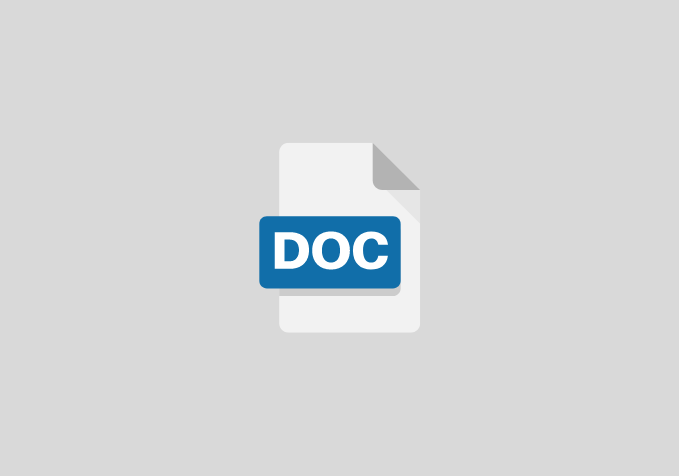A Proposal on Analysis of Critical Factors Affecting Growth and Expansion of Airline Business in Nigeria: Case Study of Aero Contractors.
CHAPTER ONE
Objective of the study
The following research objectives will be used for the study;
- To ascertain the factors that affect growth Aero contractors
- To ascertain the factors that affect expansion of Aero contractors
- To find out the effect of management on the growth of Aero contractors
CHAPTER TWO
Literature Review
Concept of air transportation
Air transportation is one of the most important components of the world’s transportation system. Not only does it provide the major means of long-distance travel in the world, but its economic impacts on global and national economies is substantial In addition, because of the very nature of aviation infrastructure (for example, airports) and the current technology for flight (for example, jet engines that consume fuel and emit air pollutants), air transportation plays an important role in efforts to improve environmental quality and promote sustainable development. The major components of the air transportation system include airports, air traffic control systems, aircraft, and airlines. Changes in each of these components will have important consequences for the future of the aviation industry. For example, significant airside congestion is occurring at some of the world’s largest airports. How can additional capacity be provided in an environment where major infrastructure investment is constrained? Technological advances are preparing for a major shift in air traffic control away from ground-based aircraft guidance to satellite navigation systems that allow aircraft to fly their own routes. One of the major trends in air transportation over the past 80 years has been ever increasing aircraft size and weight. If aircraft continue to get bigger, what will this do to airport capacity and environmental impacts? And finally, in a deregulated market environment, the airline industry is extremely volatile, with market conditions significantly affecting the viability of air service and the profitability of some airlines around the world.
CHAPTER THREE
Research methodology
Research Design
The research design adopted in this research work is the survey research design which involves the usage of self-designed questionnaire in the collection of data. Under the survey research design, primary data of this study will be collected from staff of Aero contractor, Lagos state in order to determine factors affecting growth and expansion of airline business in Nigeria. The design was chosen because it enables the researcher to collect data without manipulation of any variables of interest in the study. The design also provides opportunity for equal chance of participation in the study for respondents.
Sample Size and Sampling Techniques
The researcher will make use of stratified sampling technique because all the members have the same probability of occurrence. The researcher narrowed down the samples to staff of Aero contractor, Lagos state in order to determine factors affecting growth and expansion of airline business in Nigeria.
In this study, the researcher used the [TARO YAMANE FORMULA] to determine the sample size.
CHAPTER FOUR
Method of Data Collection
Basically, the source of data collection to be used in this study is primary and secondary. The primary source involves the use of questionnaire. The secondary source is by means of research into journals, published work in the library as well as newspaper articles.
The researcher adopted questionnaire in collecting relevant information for the study. The questions asked in the questionnaire were accompanied by multiple choice answers from which the respondents were asked to pick one.
The main reason for using this method of collecting data is to enable the researcher believe that this method will provide the necessary information as well as the ease with which the method will facilitate data collection. This will ensure balance and comprehensive information reliable enough for conclusion to be drawn.
Method of Data Analysis
The data analysis method will deal with how the necessary data collected, through primary source will be properly processed and presented for meaningful analysis. The method that will be adopted to analyze data collected will be less of manual and more of computer aided method. The computer aided package known as statistical package for social sciences (SPSS) will be employed to analyze data in the form of frequency tables in knowing factors affecting growth and expansion of airline business in Nigeria.
Chi-Square: this statistical test is used to determine whether there is any significant difference between the observed and expected theoretical frequency obtained from a distribution. It is also used to test the dependence of two attributes such as factors affecting growth and expansion of airline business in Nigeria.
CHAPTER FIVE
Conclusion
Apart from poor safety and security measures, inadequate funding and resources, lack of aviation experts and skills, high operation costs, high airport taxes and fees, the weak connectivity and restrictions on transit visas and facilities add to the menu of impediments affecting Nigeria’s aviation industry. However, addressing these challenges could significantly unlock the industry’s potential for future growth. These challenges require governments to enhance regulation of aerospace management, consumer protection and safety of airlines. With these in place, there are a lots of opportunities and future prospects for the Nigeria aviation industry.
References
- Armoo C.N. (2015) “Challenges & Prospects for the Aviation Industry in Africa: The Case of Ghana” – See more at: http://thebftonline.com/features/opinions/16164/
- Pam D.R. (2013) “Nigeria’s lethargic aviation industry: challenges & potentials”. Excerpts of an interview with Leadership magazine in 2013.
- Phillips Consulting (2015) ‘The 2015 Domestic Aviation Industry Customer Satisfaction Survey Report’, September, 2015.
- Agbo, A. (2008)-Back with a But, Cover Story TELL, Nigeria’s independent weekly Vol. 1 January, 2008.
- Akpoghomeh, O.S (1999)-“The Development of Air Transportation in Nigeria”, JournalofTransportGeography Volume 7, Issue 2, June http://www.sciencedirect.com/science?-ob
- Filani, M.O (1983) –Air Transportation in Oguntoyinbo, J.S., Areola, O.O., Filani M., eds A Geography of Nigerian Development. Second edition, Heinemann Education (Nigeria)


